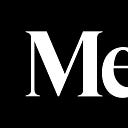A better way of thinking about attention
📱 Multiple studies have found that most of us check our phones at least once every 10–15 minutes
Issue #95: misunderstanding the Middle East, AI-powered fraud, and how to share your ideas
By Harris Sockel
In an essay from the Medium archive I keep going back to, podcast host Srinivas Rao explains that every day we face a choice: pursue deep work or give into shallowness. “The latter gives us the temporary illusion of satisfaction,” he writes, “but nothing of great significance results from operating in a frenetic state of shallowness.”
I know I’d get more done (and be happier) if I just slowed down and focused more deeply on one thing at a time. Yet I’m always sucked back into shallow attention. Since beginning this newsletter, I’ve already: stopped to check Slack 7 times, reacted to a bunch of messages with ➕, led a meeting, updated a Notion doc, half-listened to another meeting, and made coffee (which is now cold).
It seems simple (just focus!), yet many of the products we use daily are built to lure us into shallower forms of attention. (Google alone has made hundreds of billions of dollars selling our attention to advertisers.) A few years ago on Medium, researcher Matt Locke chronicled the rise of attention metrics (likes, hearts, clicks) in a series titled “A Brief History of Attention.” One fascinating fact: The “like” button was originally called a “wooyay” button (!) and was built to solve a very specific problem (giant message boards without a sorting mechanism).
Given all that, it’s easy to think about our attention as something taken from us, basically “what makes us touch our phones.” But there’s another definition I want to share, one that feels more important and maybe more hopeful. In a recent episode of the Ezra Klein Show, D. Graham Burnett — an attention scholar at Princeton — defines attention as “waiting.” (In French, attendre means “to wait.”) Another way of putting it: “Attention is an empty cup” we place between ourselves and things we care about.
I like that definition. It helps me think about my attention differently, less as something being taken from me and more as something I have to give.
What else we’re reading
- Nassim Nicholas Taleb — the Lebanese-American bestselling philosopher — delivers a contrarian history of the Levant. If you’re in the U.S., you may know this region as “the Middle East,” though that term is a U.S. invention. Most people today misunderstand the region’s history, Taleb explains. “Religious differentiation, culminating in the modern polarizations, is a rather late thing in history. So is its ancillary religious intolerance.”
- Art historian and adjunct professor Mary Rose led an online art history course recently — and discovered that one-third of her students were AI spambots. Since 2021, AI financial aid fraud has drained more than $5 million from California community colleges. Essentially, bots enroll in courses and apply for federal Pell Grants. Rose caught the bots when they tried to analyze an obscure work of art (i.e., a sculpture that hadn’t been written about on the internet); the bots failed because they can’t see art.
💡 Your daily dose of practical wisdom: about sharing your ideas
For anyone who’s ever shared an idea at work and been met with crickets: They’re not listening to you because you’re not walking them through your thought process. “Don’t just explain your idea” in a vacuum, says UX researcher Joanna Weber, “have them take the whole journey with you.”
Learn something new every day with the Medium Newsletter. Sign up here.
Unlock a library of human stories and ideas with a Medium membership.
Edited and produced by Scott Lamb & Carly Rose Gillis
Questions, feedback, or story suggestions? Email us: tips@medium.com

